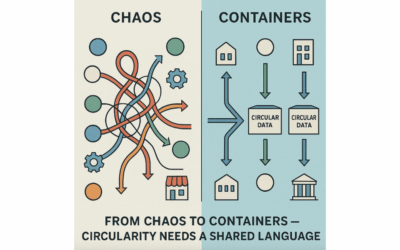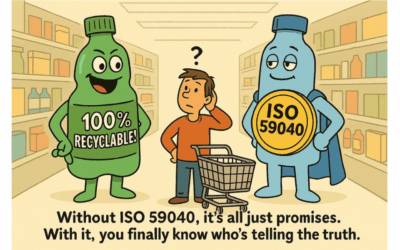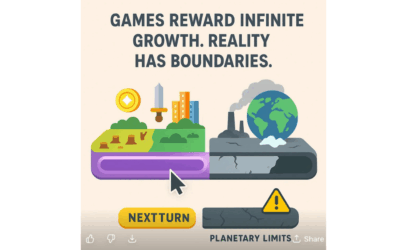The way we sell products matters as much as the way we design them. One of the most common revenue models in business—the simple sales model—has powered the industrial economy for more than a century. But while it remains effective for growth, it is structurally biased toward short-termism. And in a resource-constrained world, that is becoming a problem.
The Logic of Simple Sales
In the simple sales model, a company manufactures a product in short period of time, sells it once, and immediately transfers both long term ownership and responsibility to the customer. Revenue is realized at the moment of sale.
For consumables such as food, this approach makes sense: the product is designed to be used up, and responsibility naturally shifts to the consumer. But for durable goods—tools, electronics, furniture—the logic breaks down.
Short-Term Value, Long-Term Impact
Consider the case of a cordless drill.
- Production time: A matter of days , from raw materials to final assembly.
- Product lifespan: Typically 3–5 years in private use.
The company’s financial interest exists only in that short production window. Once the drill is sold, its entire lifecycle—years of use, maintenance, and eventual disposal—falls outside the manufacturer’s responsibility. At most, they are bound by a legally mandated warranty period.
The result: manufacturers optimize for low production cost and fast turnover, not durability, repairability, or end-of-life recovery.
Another Example of Linearity
Take a coffee machine. Designing it for repair means higher upfront costs: sturdier components, modular construction, and maintaining a stock of spare parts. It also adds complexity to operations, from logistics to after-sales service.
By contrast, a non-repairable, cheaper machine fits neatly into the sales model. The economic incentive is clear: prioritize the disposable version. Even when some premium brands succeed by offering durable, repairable goods, these remain niches in a market that overwhelmingly rewards low price and rapid replacement.
Systemic Reinforcement
This isn’t only about corporate choices—it’s embedded in the system. Accounting and financial structures mirror linear logic. Depreciation rules, for example,treat products as assets that inevitably lose value until they are written off, not as resources with recoverable potential. The mindset behind this concept assumes obsolescence, not renewal.
Consumers reinforce the cycle too. While surveys show growing interest in sustainability, actual buying behavior still favors low upfront costs. Repairable products often lose against cheaper, disposable alternatives on the shop floor.
The Missing Piece: Total Cost of Ownership
A blind spot of the sales model is that it ignores the Total Cost of Ownership (TCO)—the full cost of a product over its entire lifespan, including purchase price, maintenance, repair, energy use, and eventual disposal.
Most consumers focus only on the initial purchase price because that is the number presented to them. Manufacturers rarely highlight TCO because doing so would expose the hidden costs of disposable designs. The result is a systematic information gap: people buy the cheapest option at the counter but end up paying more in the long run through frequent replacements, repairs, or inefficiency.
By not integrating TCO into product comparisons, the sales model perpetuates short-term decision-making—further reinforcing the linear logic of fast turnover and hidden waste.
The Invisible Costs: Externalities
The linear sales model also ignores externalities—the environmental and social costs of production and consumption that are not reflected in market prices.
A factory can pollute rivers or emit greenhouse gases without bearing the full cost of those impacts. Instead, society at large pays through degraded ecosystems, health costs, or climate change.
The first signs of this logic shifting are emerging. CO₂ taxes, introduced in some countries, put a price on emissions. But so far, these remain modest compared to the true external costs, and they only address a fraction of the wider impacts such as resource depletion, toxic waste, or biodiversity loss.
Until externalities are consistently priced in, the sales model will continue to promote products that look cheap at checkout but are expensive for society.
A Big-Ticket Example: Cars
If drills and coffee machines illustrate the principle, cars show the scale of the challenge.
- Traditional sales model: The buyer pays once, becomes the owner, and takes on all responsibilities for fuel, maintenance, insurance, taxes, tires, depreciation, and eventual disposal. Manufacturers earn revenue only at the point of sale and have little incentive to design for low total cost of ownership.
- Circular alternatives: Some automakers and mobility providers are experimenting with “mobility-as-a-service” models. Here, the manufacturer retains ownership and responsibility, while customers pay for use (per month or per kilometer). This aligns financial incentives with durability, efficiency, and end-of-life recovery.
The car industry highlights both the limitations of sales and the potential of alternative models—and given its enormous resource and carbon footprint, it’s one of the sectors where rethinking the model matters most.
Why It Cannot Be Fully Circular
By design, the simple sales model locks businesses into the take–make–dispose logic:
- Revenue ends at the point of sale.
- Responsibility ends at the warranty.
- Incentives end at production.
The model therefore rewards short lifespans and repeat purchases—exactly the opposite of what circularity requires.
A Model at Odds With the Future
To be clear, the sales model is not inherently “bad.” It built much of the prosperity we enjoy today and continues to work in certain contexts. But it is structurally misaligned with sustainability goals.
Alternative business models—leasing, product-as-a-service, remanufacturing—create incentives that extend beyond the sale. They tie revenue to durability, reuse, and resource recovery. These models are not easy to scale: they are capital-intensive, logistically complex, and often more expensive upfront. But without experimenting beyond sales, the incentive to design for long-term value will remain weak.
The Way Forward
The simple sales model is familiar, efficient, and transparent. But in its current form, it locks businesses into short-term logic while ignoring long-term consequences—especially when total cost of ownership and externalities are left out of the picture.
If we want to align business with sustainability, we need models that extend accountability—and opportunity—beyond the point of sale.
Until then, the simple sales model will remain what it has always been: a short-term engine running on long-term resources.
👉 If you’re looking to embed circular design principles into your business model, explore our circular economy consulting services to see how we can support you.




0 commentaires